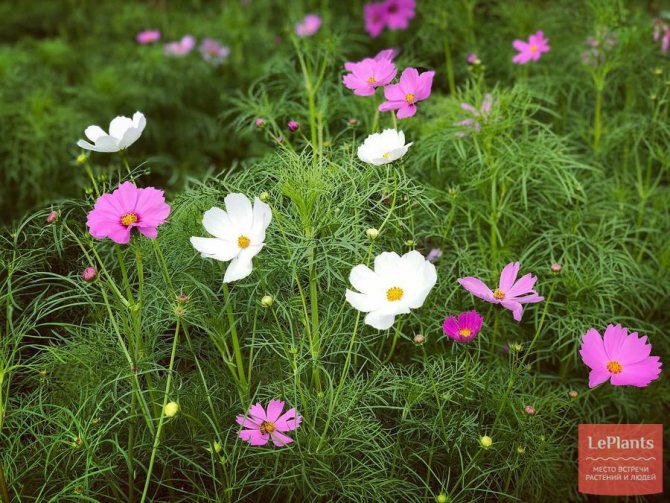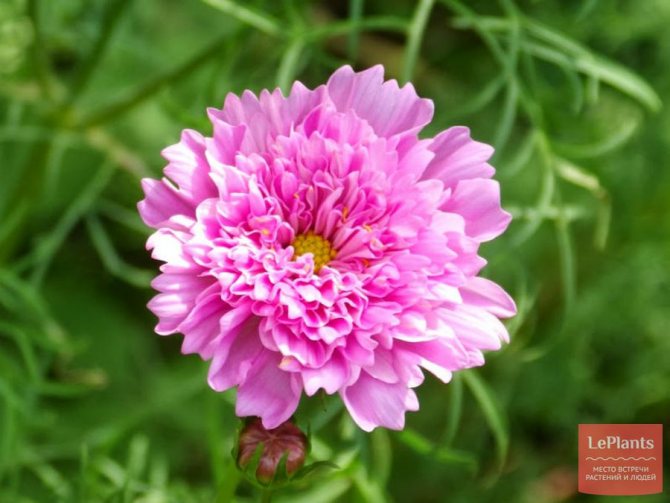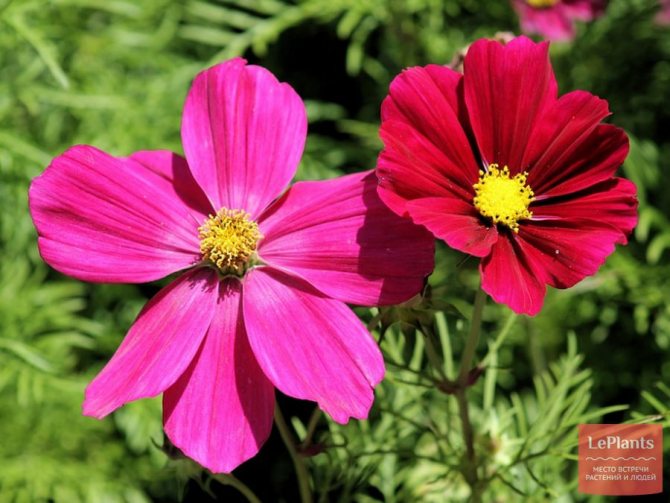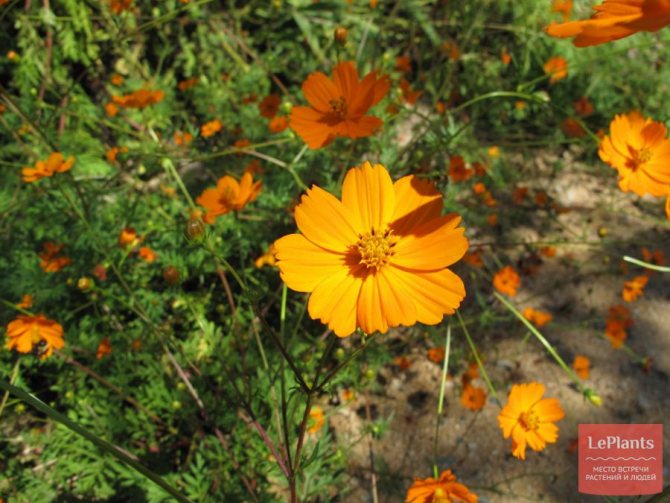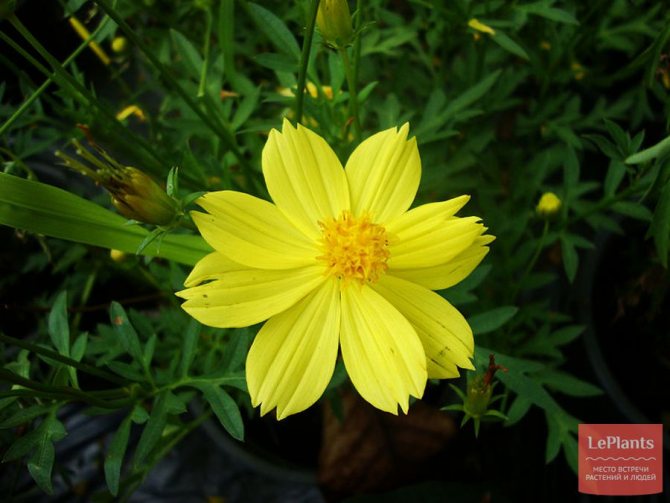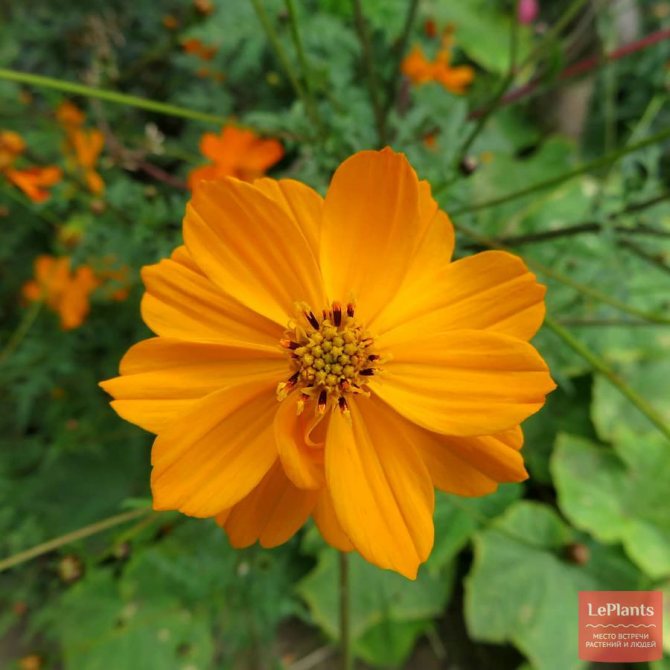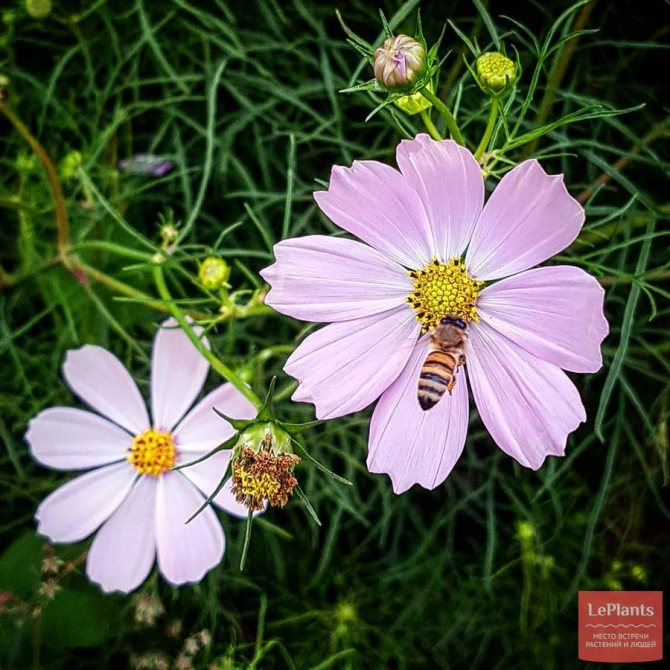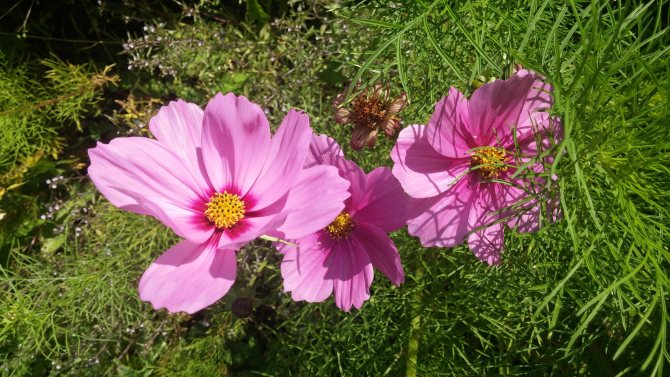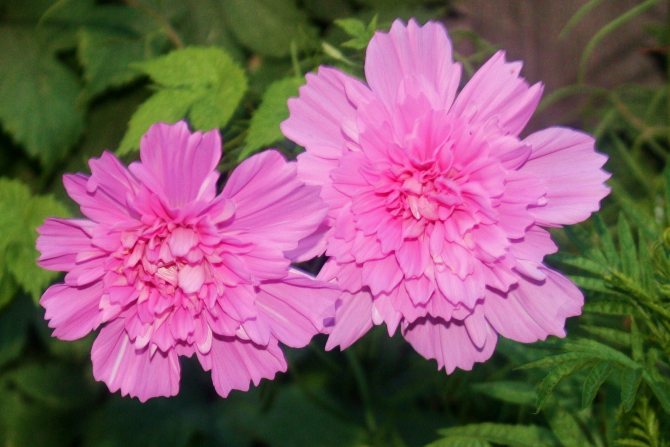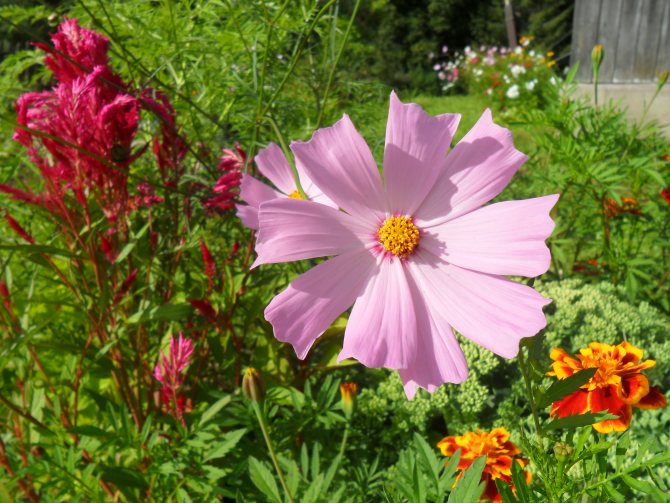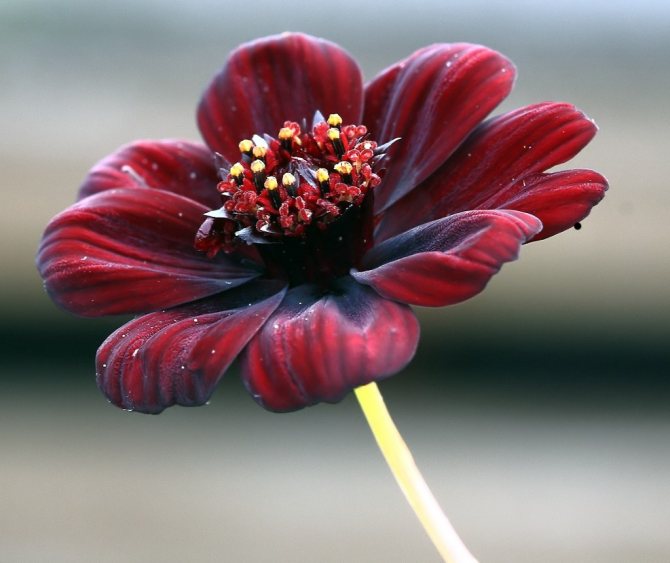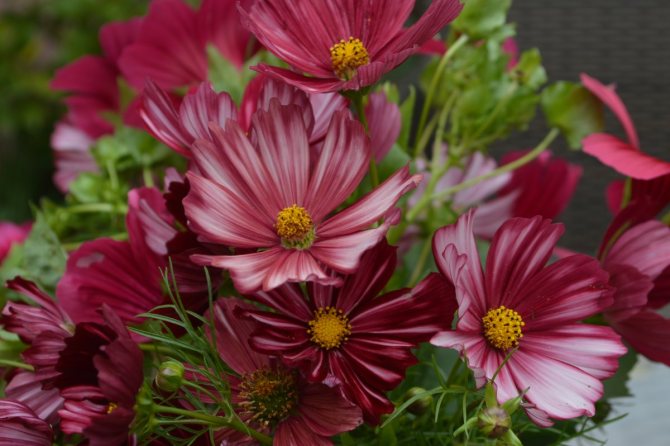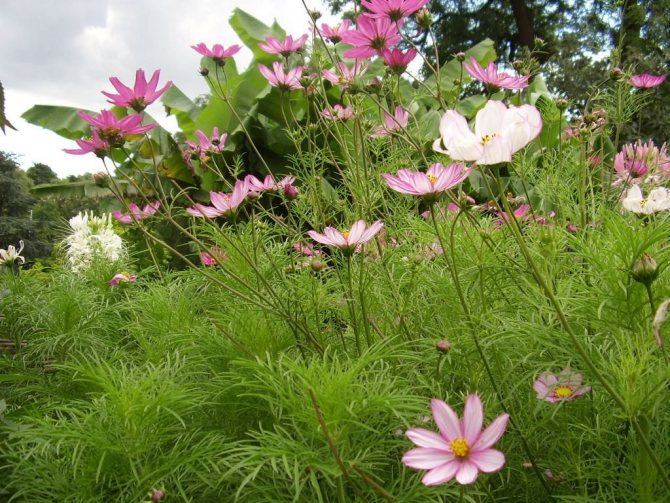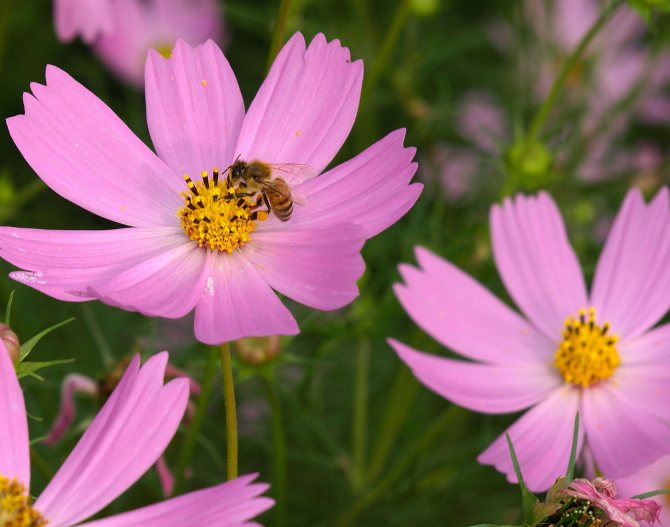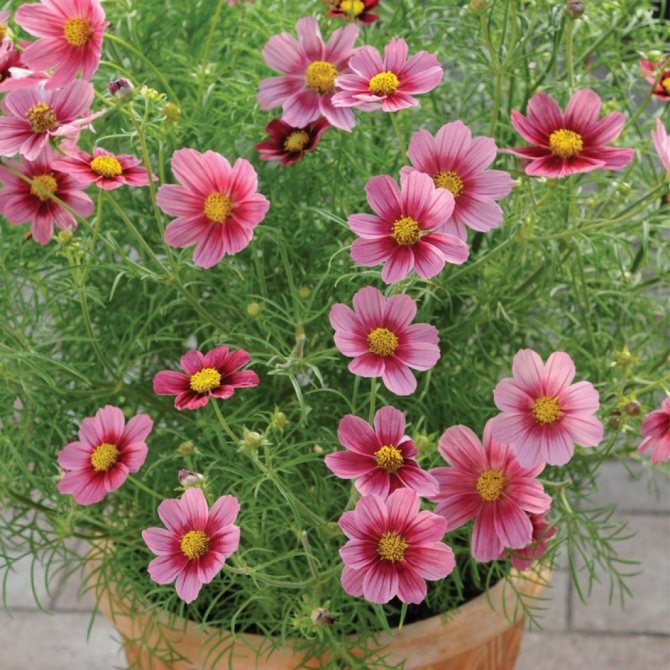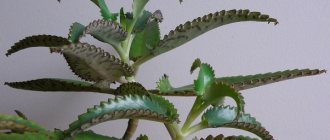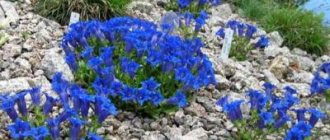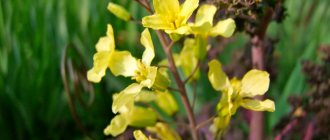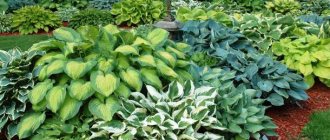Kosmeya flowers are very popular among amateur gardeners. It is very easy to grow them, but not everyone knows that kosmeya can be very interesting colors and can be very different in appearance from the usual flower that we know.
Kosmeya flowers are annuals and perennials that look very beautiful in flower beds, go well with other ornamental plants and can be easily grown on their own from seeds.
Kosmeya are herbaceous plants with more than 20 species. In Greek, its name means "decoration".
The homeland of this flower is America and Mexico.
Kosmeya: types and varieties for open ground
In temperate climates, only 3 plant species have been cultivated (2 annuals and 1 perennial). But thanks to the work of breeders, on their basis, many varieties and hybrids were obtained, cultivated in gardens and flower beds. For open ground, the types of Kosmei described below are used.

Double-feathery (bipinnatus)
A herbaceous annual native to the mountainous regions of Mexico. Stems are straight, strongly branched, 0.8-1.5 m high. The leaves have threadlike dissections, similar to dill leaves. Flowers are single or collected in corymbose inflorescences, reaching 7-10 cm in diameter. The petals can be white, red, pink, purple, the center of the basket is yellow.
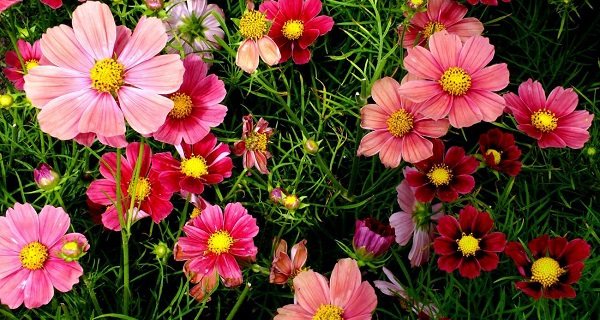

Popular varieties:
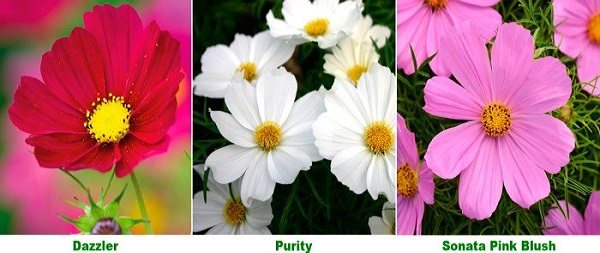

Sulfur yellow (sulphureus)
An annual native to South America. It has straight, branched stems with an edge up to 1.5 m high. Leaves with double or triple cuts, lanceolate. The ligulate flowers are orange or yellow, the tubular flowers are yellow with dark anthers.
Varieties:
- Bilbo;
- Crest Lemon;
- Diablo.


Blood red (atrosanguineus)
A perennial species native to Mexico. Leaves are complex, have an unpaired number of leaves. The plant is very thermophilic. Therefore, it is recommended to grow it in pots. If this kosmeya hibernates in the open field, it is provided with a reliable shelter.
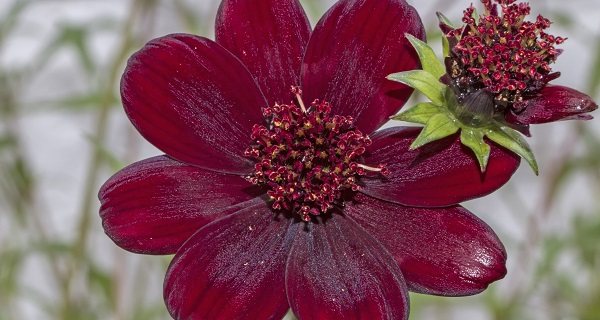

Today, terry cosmes are gaining great popularity:
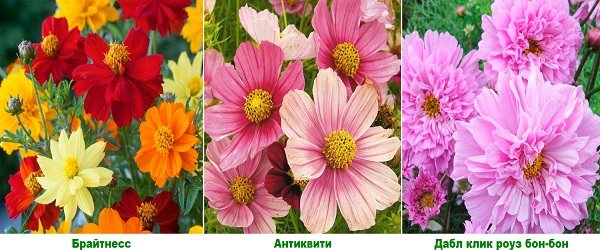

Features of growing cosmos as a culture
Kosmeya (its second name is "space") is an unpretentious plant, quite easy to care for, even a novice gardener can cope with the task of growing it. However, here too there are rules and subtleties that must be adhered to.
Cosmeya came from the southern latitudes, but, as it turned out, she also liked the climate of the middle and northern regions, and she began to march through the cities and villages, gaining more and more distribution, and at the same time the people's love.
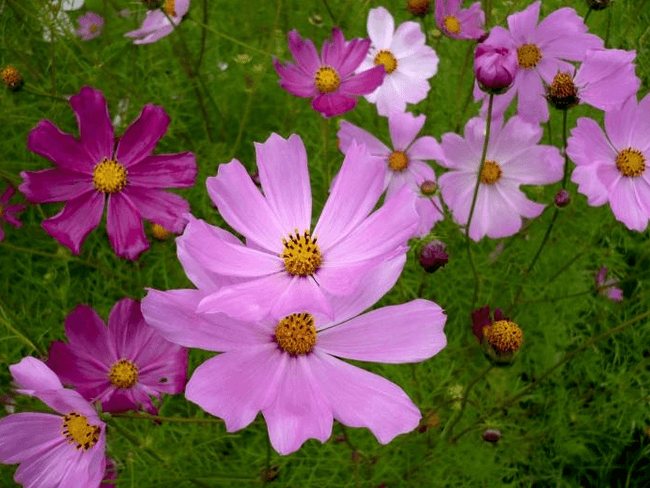

Kosmeya is an unpretentious and unpretentious flower, which, however, blooms amicably and very effectively
Kosmeya loves warmth and light, especially for perennial varieties. She has well developed roots, so drought does not pose a great threat to the plant.
Kosmeya takes root on almost any soil, but it blooms most beautifully and most luxuriantly on light soils with good drainage and low acidity.
For cosmos, a sunny, but at the same time protected from strong winds, place on the site is required.The flower also feels good in a shaded place, however, being deprived of such a beloved sun, it will use all its strength to build up lush greenery to the detriment of flowering.
Video: acquaintance with cosmeia
Varieties
Like many flowers, cosme has many varieties that are divided into several categories. Some are perennial, others are double-pinnate (a variety widespread in the European territory of Russia), and there are sulfur-yellow cosmos.
- Cosmeya is double-feathery. An annual variation known to everyone and everyone, which is planted in parks and squares, in the courtyards of city houses and front gardens. Its flowers reach a diameter of 10 cm.The height of the plant reaches one and a half meters, so this variety is often used to decorate walls, fences, as well as the edges of paths. It reproduces well by itself by self-seeding. In our latitudes, the double-feathery species of cosmos has been living for a long time, and therefore managed to create many new varieties, among which Dazzler, Radiance, Purity and Sonata are especially popular, which, in turn, is divided into Pink, White and Carmine (according to the color of the flowers).
- Kosmeya is sulfur-yellow. It belongs to the category of annuals, however, it is more dependent on solar heat, and therefore in a cold summer (which does not happen so rarely in mid-latitudes) it will feel bad. But in the southern regions it is the place - there it will show itself in all its glory. In height, it is the same as double-pinnate, but inferior in size to flowers (no more than 5 cm). The buds are orange-red, like a living sun - this is the original color of the plant, on the basis of which varieties with other colors were bred. The most famous varieties of sulfur-yellow cosme are Bilbo and Krest Lemon.
- Cosmeya is blood-red. The flower is very similar to sulfur-yellow in its dependence on the heat, and in the middle lane it makes sense to grow it only at home on the balcony. It is a perennial variety.
- Terry kosmeya... The fruit of selection work, which is distinguished by lush dahlia-like flowers and thickened stems to keep all this floral weight. This species has many varieties and colors, among which are the Golden Valley (blooms until October), Polydor Fox (magnificent orange and scarlet inflorescences), as well as Cranberry Click and Red Pipe (only red flowers).
A big plus of terry varieties obtained as a result of selection is that they do not change color as a result of sowing seeds collected by hand after flowering.
Varietal variety of plants in the photo
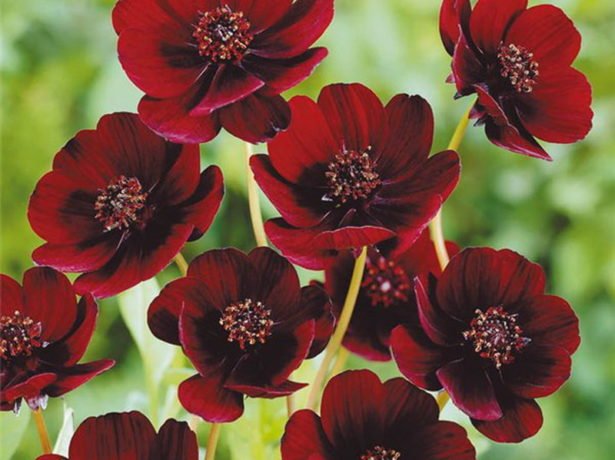

Kosmeya blood-red - a variety that is quite whimsical to temperature conditions
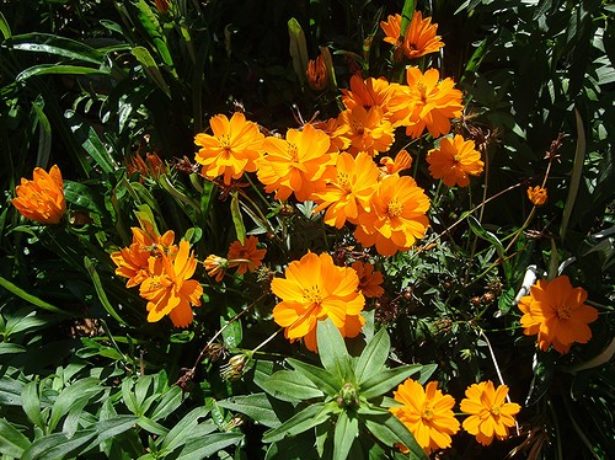

Cosmea variety Bilbo
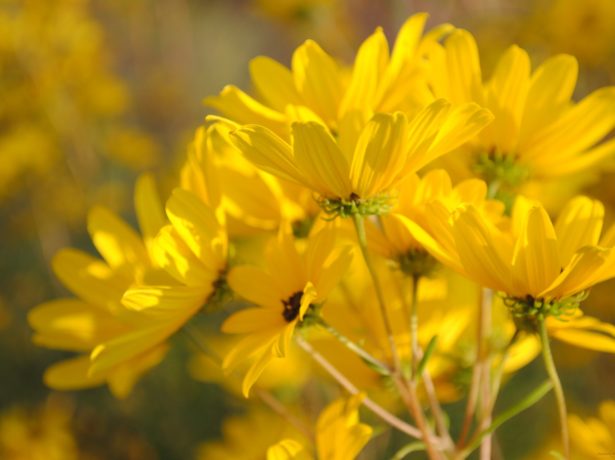

Variety Golden Valley


Cranberry click variety
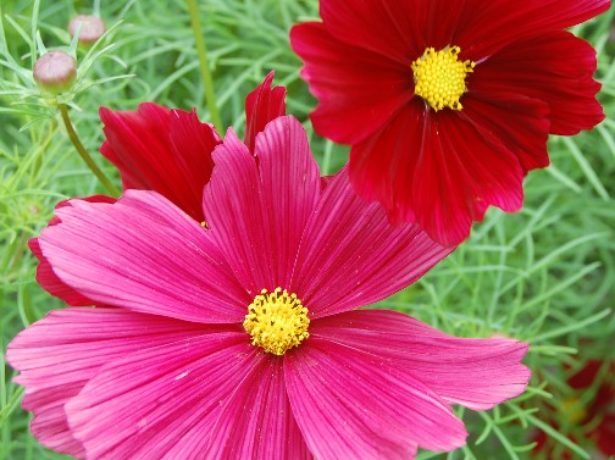

Cosme variety Dazzler


Cosmea variety Radians
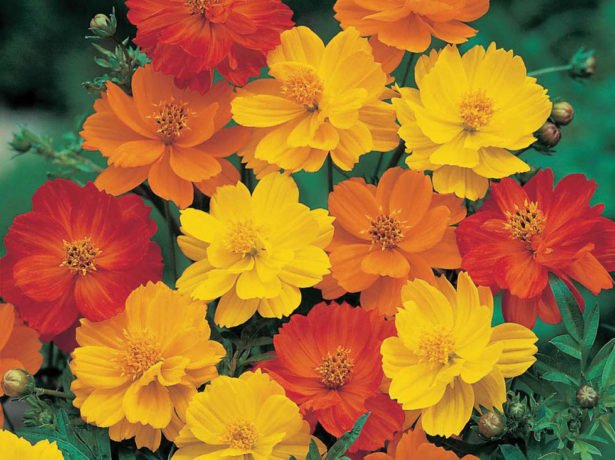

Variety Polydor Fox
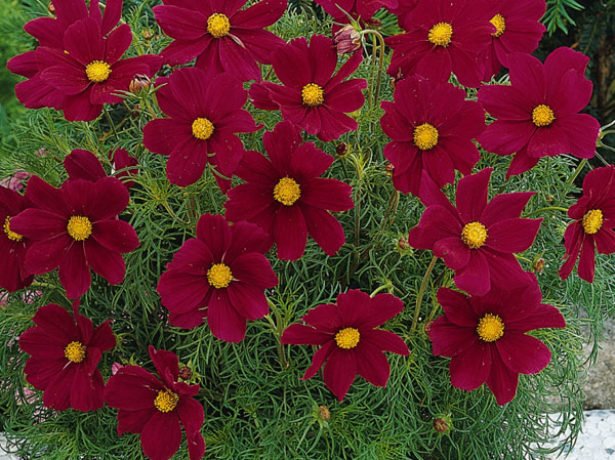

Cosmea variety Carmine
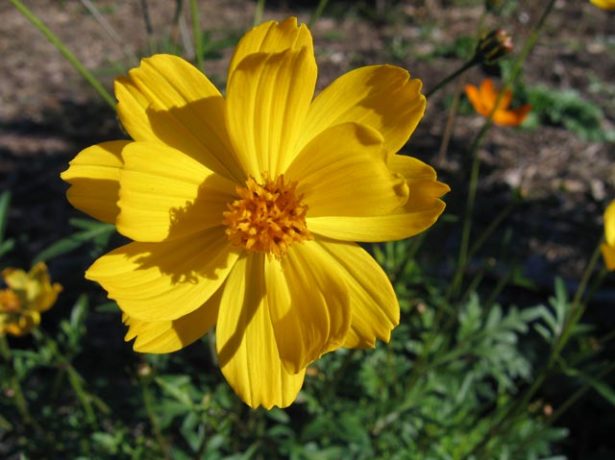

Variety Cross Lemon
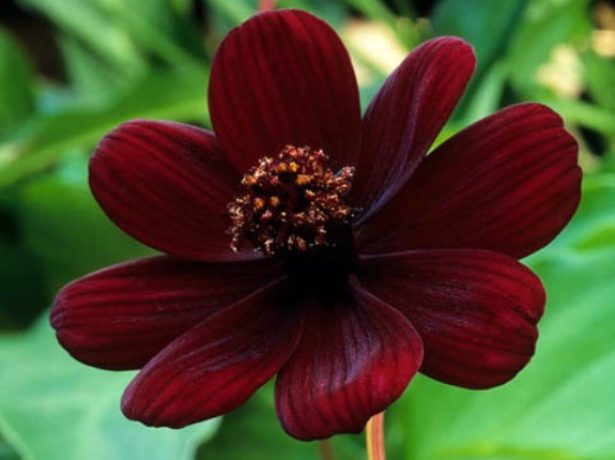

The chocolate cosme has a pleasant aroma
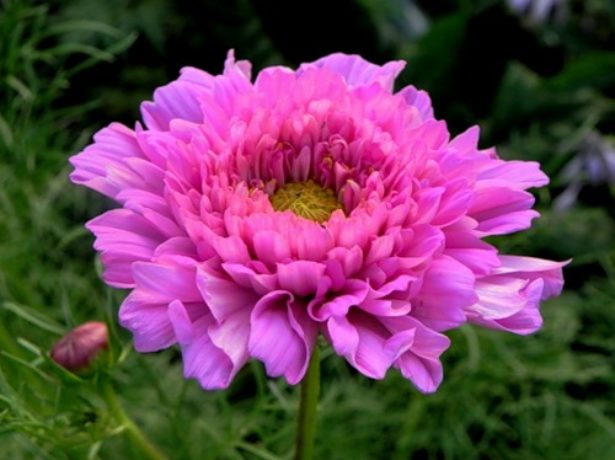

Double Click Rose Bonbon
Growing seedlings from seeds
Kosmeya reproduces only by seed. Moreover, it can be planted directly in the ground or on seedlings. Seedling is considered more reliable. Sowing seeds is recommended in March and April, depending on the desired flowering time.
Soil and capacity
Fill the planting container, cups or pots with nutrient mixture. Moisten it and spread the seeds over the surface at a distance of 10 cm from each other. Plant 2-3 seeds in peat pots. Do not sprinkle them, but only slightly press them into the ground. Spray crops from a spray bottle, cover with foil and put in a bright place.
Seedling care
The best temperature for seed germination is + 15..18 degrees. In a warmer room, their germination decreases. The main thing is to provide bright lighting. A pick can be carried out if there is a desire to preserve all seedlings without loss. This can be done after the appearance of 2 real sheets. You can simply thin out the seedlings if the seeds are densely planted.In pots where 2-3 seeds are sown, leave only the strongest seedlings.
Note! Water the seedlings sparingly. It is important not to overmoisten or overdry the substrate. If the sprouts are very stretched, they can pinch the tops, but it is better to turn on additional lighting.
Transplanting
Seedlings are planted in open ground in June. Until that time, it should reach a height of 6 cm. You can plant the plant in May, if weather conditions permit and there is no risk of returning night frosts.
Dig holes 30x30 cm. Water them. Remove the seedlings from the container along with the soil, place them in the holes, dig in and water them again. For tall varieties, install the support immediately.
Photo gallery
Seed planting in open ground
It is not necessary to spend time growing seedlings. Kosmeya can reproduce well by self-seeding. But it is better to control this process and sow seeds on the site centrally. The best time for this is early spring, when the snow melts. You can also sow before winter.
Location selection and lighting
Kosmeya is not very demanding on the place of growth. It can grow in both sunny and shady areas. But the lighter the area, the more abundant the flowering and richer shades of flowers will be. In the shade, the number of flowers will be less, but the green mass will be more lush.
It is best to sow seeds in open, well-lit areas that are sheltered from the wind. The soil should be moderately fertile, slightly acidic, well drained.
Landing rules
Make small indentations. Cover up seeds to a depth of 1 cm, 3-4 pieces in nests. Keep a distance of 30-40 cm between them. The bloom of the cosmos will come in July or early August.
Growing conditions
The site for the cosmos is set aside open and sunny. Where there are no drafts and gusty winds that can damage fragile stems. With a sufficient amount of light, kosmeya pleases with a longer and more lush flowering than in partial shade. However, in the bright sun, the flowers will soon fade. In the shade, flowering is very poor.
The plant needs a moderately nutritious, light and breathable soil for growth. A neutral or slightly acidic composition is considered optimal. Places with stagnant water should be avoided.
Kosmeya weakly accumulates moisture, therefore frequent and abundant watering is necessary. Young seedlings are watered regularly, and adult stems are watered when the soil begins to dry out. On dry days, each bush needs up to 4 buckets.
Top dressing begins in the first half of June. First, it is watered 2 times a month with a flowering stimulator ("Bud"). During the season, fertilized with organic matter and superphosphate, which is especially necessary on scarce soils.
Outdoor care
The flower is very unpretentious and does not require much attention. Everyone can take care of him.
Watering
The plant is drought tolerant. But young seedlings at the beginning of development need to ensure stable soil moisture. This is the time for the growth of green mass, before the flowering of the kosmeya should not experience a moisture deficit. When a culture blooms, it needs watering only during dry periods. Waterlogging negatively affects the abundance of flowering.
Top dressing and fertilization
This is not a mandatory procedure for cosme. It grows well in moderately nutritious soils. If the soil is very poor, it is fertilized at the stage of bud formation 1 time per season. Complex mineral dressings are suitable for the plant. If you fertilize a flower during the growing season, it will build up greenery and negatively affect flowering.
Pruning
For greater bushiness, the top of the cosme can be cut off. This stimulates the growth of side shoots. To prolong flowering, stimulate new budding, wilted flowers should be removed in time.
Bloom
Mexican aster begins to bloom in June. The duration of flowering depends on the growing conditions and care. It can continue until frost.The flowers are baskets with a diameter of 6-12 cm. In the center, the tubular flowers are dark, above them are yellow anthers. The middle is flat or spherical. Reed flowers can be of different shades, depending on the variety.
Sometimes kosmeya does not want to bloom. The reasons for this may be different:
- very nutritious soil, which is why all the forces go to building greenery;
- too late sowing dates, as a rule, this refers to thermophilic varieties grown in the northern regions;
- planting a plant in the shade;
- abundant watering.
Description
There are 25 species of cosme registered. Among them there are annuals and perennials. A number of varieties winters well in southern latitudes, and in middle latitudes, the kosmeya is an annual plant.
The height of a thin, very branched stem is from 50 to 150 cm. Numerous shoots are covered with a shell of a rich, green tone with a network of reddish veins. Opposite leaves of an openwork structure form a spreading dwarf shrub, resembling a cloud of green cobwebs. Leaves on long petioles are divided into oval segments with sharp edges, reminiscent of soft needles.
The flowering period occurs in the summer months and lasts until the autumn frost. Shield or paniculate inflorescences are located at the top of the bush. The inflorescence looks like a basket 6-12 cm in size. The lush center is formed by tubular flowers of brown and black color. They are covered with yellow anthers. The shape of the central part is flat or spherical with an edging of one or more tiers of petals in red, white, pink, purple, lilac, lilac or yellow. The petals form a flat sail or a graceful funnel.


Appearance
Flower baskets emit a subtle, slightly tart aroma.
After pollination, dark elongated seeds ripen. Their germination capacity lasts up to 3 years.
Protection from pests and diseases
Kosmeya is resistant to pests and diseases. Sometimes snails and slugs can settle on young seedlings. They need to be removed manually. If there are a lot of pests, you can use the preparations "Thunderstorm", "Pochin", "Lepidocide". You can spread special traps around the site to protect plants from gastropods.
In the case of frequent waterlogging of the soil and poor drainage of the soil, the flower can undergo fungal infections:
- powdery mildew;
- fusarium;
- root rot.
It is better to dig up and destroy damaged bushes right away. Treat all other flowers on the site with a fungicide (Fitosporin) to avoid infection.
Kosmeya: varieties (video)
Autumn care, seed collection and wintering
If you plan to grow cosmos on the site in the future, you can prepare seeds yourself. Collection time - late August and early September. Choose the largest buds for seed ripening. You can remove the seeds as soon as they turn dark. They fall asleep easily. You can store them in a dry warm place in paper bags for 2-3 years.
It should be borne in mind that the collected seeds of varietal cosmes during planting do not retain all the maternal characteristics. Therefore, it is better to purchase the seed of the desired variety in a specialized store.
If perennial cosmos remain in the open field for the winter, they need a reliable shelter. This is especially true of the blood-red cosmos. After the end of flowering, the stems of the plant must be cut off, leaving 10 cm. Pour a thick layer of mulch (sawdust, dry leaves). But it is better to transplant heat-loving varieties in pots for the winter and store in a warm room.
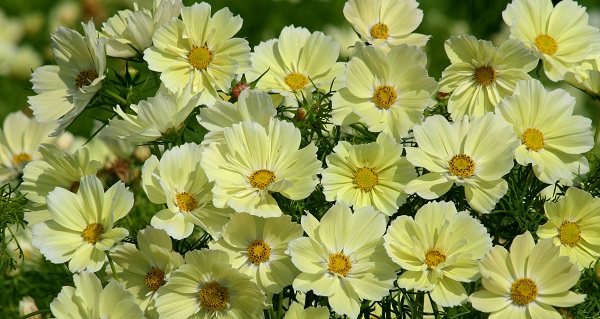

The Legend of Cosmos
In the distant, distant times, when the stars were people and stars at the same time, the star Kosmeya lived. She was a blonde, curly beauty with long hair. And Kosmeya's eyes were extraordinary. They changed color and depended on her mood. And she fell in love with the Cosmos. Powerful and fickle. He also adored Kosmeya.But he often met other charming girls.
When, for the umpteenth time, the Cosmos did not come to the meeting, Cosmos's heart could not stand it. It exploded into many pieces. All of them fell to the Earth and sprouted with flowers of different shades with a delicious scent of love. Outwardly, the plants are fragile and delicate, but hardy and persistent. Now everyone who smells an amazing aroma is looking for their soul mate. How the Cosmos is looking for Cosmeya in the vastness of the Universe.
Kosmeya in landscape design
This flower is interesting for landscape decoration due to its decorative effect. Kosmeya is suitable for simulating a meadow, decorating a village garden. It is used for ordinary plantings, the design of paths, curbs, facades. Tall varieties will hide unsightly areas well.
Mexican aster looks good in compositions with:
- marigolds;
- daisies;
- phlox;
- calendula;
- verbena.
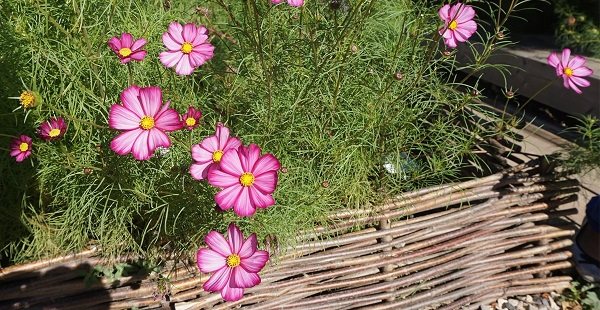

Kosmeya is a beautiful, yet unpretentious flower that does not require a lot of time and effort to grow. It is easy to propagate from seeds and get a large number of new plants that adorn the backyard.
Do you want to know more useful information about growing Cosmos? Watch the following video:
Plant use
Openwork greenery and delicate flowers look simply charming anywhere. Cosmeya can be planted on the street along the fence, at the curb, in the flower garden. A subtle tart aroma spreads over the bright baskets. It is framed by bushes and trees, and is also planted between vegetable beds. In the latter case, the beauty is also beneficial. She turns the garden into a flower garden and at the same time protects vegetables from the scorching sun with openwork leaves. At the same time, enough light passes through the lace leaves.
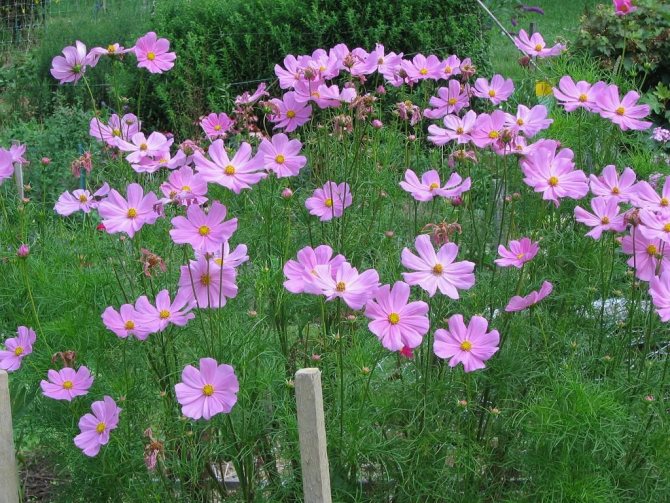

In a flowerbed, the plant is absolutely non-aggressive. Cosmey is combined with chamomiles, mallow, lilies, geraniums, asters, calendula, alissum, cloves, salvia or bells. When choosing a place and neighbors in a flower bed, the color of the petals and the height of the plant are taken into account. It can also be planted in flowerpots and brought indoors for the winter.
Wintering
For most of Russia, it will be relevant to take additional measures to protect the dormant plant in the winter. Namely:
- If the frosts are already strong, and there is little snow, do not be too lazy to throw the snow that has already fallen on the sleeping shoots. A layer of snow will protect well from frost.
- Until the snow has fallen, and the nights are already getting cold, it does not hurt to sprinkle the wintering shoots with stove ash. Ash will not only warm the plants, but also fertilize the soil and protect them from pests in the spring.
Preparing for winter
To collect seeds for planting for the next season, you should choose the most lush, large buds. When the flower opens, a gauze bandage is put on it to keep the seeds from falling to the ground. For high-quality drying, it is necessary to hold these dressings until the seeds are completely blackened. It is worth noting that the transfer of varietal affiliation during propagation by seeds does not occur, and future seedlings will lose their decorative effect to some extent. Therefore, for the purpose of planting a certain variety and color of the cosmos, it is still better to purchase seeds in stores.
By mid-autumn, after the end of active flowering, the kosmeya is cut off, leaving about 10 cm of the stem length. Despite the rather strong frost-resistant characteristics, it should be covered with mulch, spruce branches, peat, quail straw, that is, with any material that can save the root system from low temperatures and the snowless winter of the Moscow region.
Tags: perennial
Mr. Summer resident informs: the reasons why cosmeya does not bloom
The following can be distinguished:
- Late landing. If this is not done on time, then the flower may not have time to open.
- Excessive feeding of the plant.Due to the fact that the land in which the flower grows is excessively fertile, all his forces go to increase the green mass: tall and thick stems, large leaves. To avoid this, you should control the time and amount of fertilizer applied.
- Violation of the rules of care (overflow, placement in the shade) can lead to poor flower opening.
What to do with kosmeya after flowering?
After the plant has completely bloomed, you need to carry out two procedures. It:
- Removal of seeds. To prevent the seeds from scattering, wilted buds need to be wrapped with gauze bags. After darkening of the seeds, the inflorescences can be removed.
- Preparing for winter. In the fall, perennial cosmeia is cut off. Above the surface of the earth, a stem with a height of no more than 15-20 cm should remain. In order to prevent frosts from damaging the root system of plants, they are covered with coniferous branches or a dense layer of dried grass.
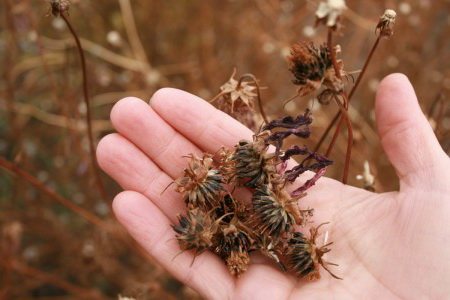

Removing seed pods
Kosmeya - a unique plant that provides many ideas for landscape design. With the help of these flowers, you can arrange a bright hedge, create a decorative flower garden in a flower bed, or hide an ugly wooden fence behind tall plants. And kosmeya is actively used for landscaping city parks and flower beds.
Propagation of cosmos by seeds
Kosmeya is propagated by seeds. I plant it immediately into the ground, it has never happened before that it has not ascended. I scatter the seeds over the surface of the garden in early spring, press down with my palm, running along the surface of the soil, as if lightly sprinkling them, but not burying them.
White cosme
Many people write that it is possible to sow in late autumn under the snow. Honestly, I haven't tried it. Seed germination is 3 years.
Can be propagated by cosmey and seedlings. In March-April, also press some seeds into the ground, water, cover with foil and place in the light at a temperature of 15 ... 19 ° C. Seedlings will appear in 2 weeks. When the seedlings reach 10 cm, they are thinned out. After the spring frosts are over, the kosmeya is planted in the garden in a permanent place.
Seeds, about one centimeter in size, oblong, dark brown, gray, gray-yellow. A bit like claws. Two hundred and fifty seeds weigh only one gram. Do not lose germination for two years. To avoid cross-pollination, different varieties are planted separately at a distance of up to 500 m.
Without separate cultivation of different varieties in the next season, all kinds of unexpected colors of flowers can appear. It is better to buy varietal seeds from trusted firms to guarantee purity.
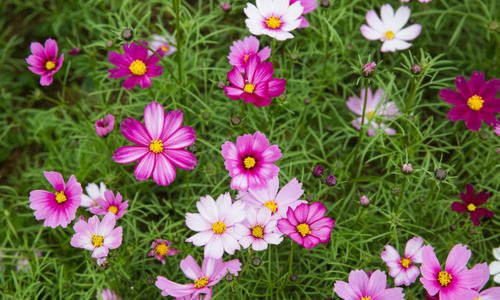

Kosmeya reproduces well by itself, giving self-seeding, and can become a weed on the site. The seeds ripen in August. The collection is carried out every week. Collect them at the moment of brown coloration.
If you have been growing crocuses in the garden for more than 4 years, then it's time to plant them. During this time, the bulbs have grown, forming the so-called "families" with children. It is with these children that crocuses reproduce. Adult bulbs also need replanting as they need space to grow.
In June, the crocus corms are dug up and carefully divided the nest. In the future, each baby is planted as an independent bulb.
Why does not kosmeya bloom
Sometimes gardeners are faced with the fact that their beloved kosmeya flatly refuses to bloom. There may be several reasons for this:
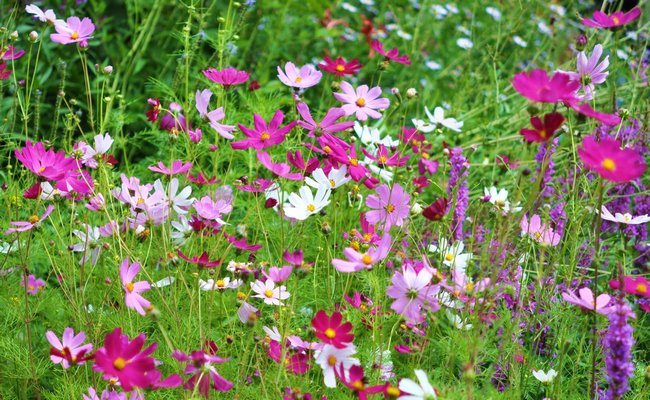

- To begin with, the most common reason is the oily and very fertile soil on which the kosmeya, as they say, “fattens”. That is, he uses all his strength to build up the green mass. As a result, we have tall, densely leafy with thick stems, on which there are no buds or appear, but in single specimens. A smart decision is not to feed the flowers and leave them to themselves. Gradually, albeit not immediately, the land in the chosen place will be depleted, and the cosmos, oddly enough, will begin to bloom more and more abundantly.
- It so happens that the gardener can delay sowing - in this case, flowering can not wait. This usually applies to southern varieties that are trying to grow in the northern regions - they simply do not have enough heat and time for full development. If you just missed the right time for planting, you should take into account that you risk not waiting for a beautiful picture on your site this season.
- Failure to comply with the conditions for caring for the plant is usually too abundant watering or planting cosmos in the shade. In this case, she will direct her forces to the greens, without giving buds.
Varietal mixes
These are varieties that include flowers of the same type, but differing in color.
Sensation
A mixture of kosmea, reaching a height of 1-1.5 m, baskets of white, pink and red shades.
Iridescent overflows
Pleasing to the eye with its harmonious variety of tones, there are pink, red, white, brown-crimson. They grow up to 1.2 m.
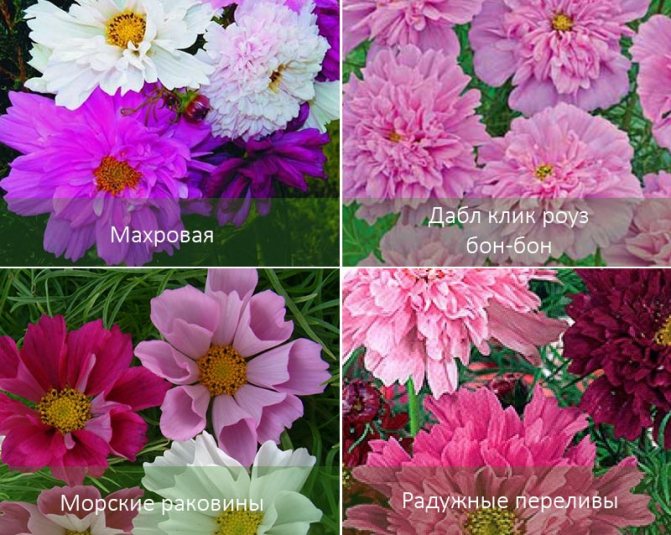

Sea shells
The most entertaining species, which is characterized by reed inflorescences, connected in a tube, branching and in appearance similar to shells.
How to collect seeds
If you want to keep your favorite variety and collect seeds from it, then follow a couple of simple tips:
Select the largest seed baskets and cover them with cheesecloth until fully ripe. The seeds are light and can be blown away by the wind.
Already ripe seeds are brown in color, should be dry and easy to separate from the basket.
Store seeds in a cloth or paper bag in a dry, dark place with good ventilation. When stored properly, seeds remain viable for about 3 years.
Features of seeds: removal and selection for sowing
Seeds suitable for planting can be harvested even in colder climates. The plant is unpretentious, so the planting material will sprout in any case. The assortment of cosme seeds is presented in all flower shops. However, most gardeners prefer to use their own planting material. They remove it from adult plants in their area. This procedure has the following nuances:
- Flowering takes a long time, so there is no need to wait until the end of flowering to collect seeds.
- Planting material is harvested in early autumn from those flowers that have already dried up.
- The seeds have a long shelf life. They are able to ascend within 3-4 years after collection or purchase.
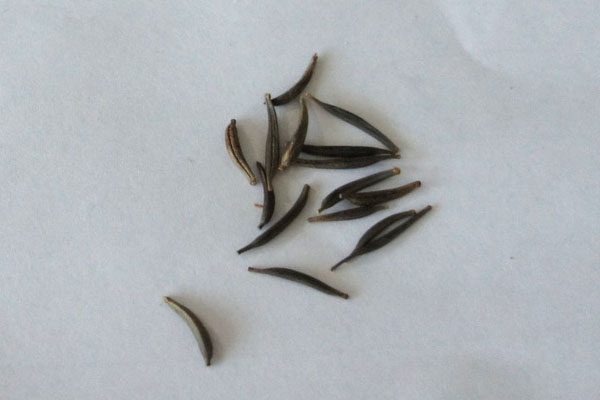

Cosme seeds are elongated and have a dark shade
Self-seeding principles
Kosmeya is a wild-growing flower, so it is able to reproduce by self-seeding. In the fall, seeds are poured out of the inflorescences to germinate next spring. If there are no complaints about the variety and characteristics of the flower on the site, you can let it reproduce on its own.
Important! The plant tends to cross-pollinate. If 2-3 different varieties of cosmos grow nearby, it will be impossible to achieve a fine color when propagating by self-seeding.
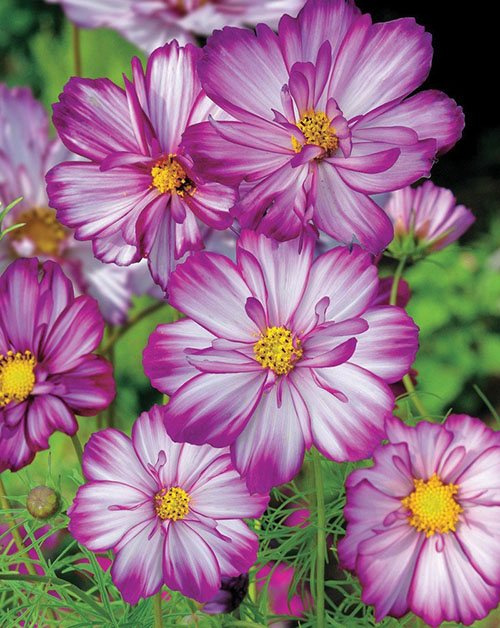

Kosmeya delicate lilac color
Cosmeia care rules
Kosmeya stands out among other flowers for its unpretentiousness, so even a beginner can grow it. The main rule is to provide the culture with abundant watering. Moisture is added weekly, and 4-5 buckets of water need to be poured under each bush. After watering, the soil must be loosened, and if you are caring for a young plant, then free it from weeds until the bush gets stronger.
Top dressing is carried out three times per season: the first time even before budding, the second - during the formation of buds, and the third - directly during flowering. For this purpose, you can use any preparations for flowering plants.
It is also necessary to regularly remove wilted buds so that the plant forms new ovaries faster. If desired, the bush can be trimmed slightly: this does not reduce the number and quality of flowers, but the plant itself will look neater and more compact.
Preparing the landing site
Nature has endowed cosmea with an amazing ability to adapt to any growing conditions. Perennial varieties easily tolerate severe winter temperatures and prolonged droughts in summer. That is why summer residents near Moscow successfully use these flowers to ennoble their suburban areas. Sunny areas give rise to incredibly abundant flowering, and partial shade contributes to the formation of a powerful green bush of the plant.


Kosmeya prefers nutritious soil, however, an excessive content of nutrients provokes excessive growth of green mass to the detriment of the formation of peduncles. When the soil is poor, the future flower bed for the cosmos is enriched with manure introduced in the fall, before the upcoming spring sowing of seeds.
For tall varieties, you need a reliable shelter from powerful gusts of wind that can break the thin shoots of the plant.
If a flower is planted as a participant in a landscape composition, velvet, chamomile and phlox should be noted among the favorable neighbors.

